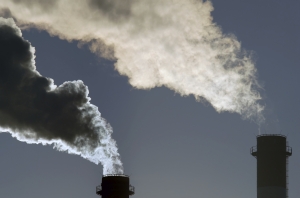MELBOURNE, May 18, 2015 – The latest inventory of national greenhouse gas (GHG) emissions, released by the government, indicates that Australian emissions increased 1 per cent over the 2015 calendar year, growing to 3 per cent above 2000 levels – and forecast to be above of Australia’s target to cut emissions to minus 5 per cent on 2000 levels by 2020.
The government’s National Greenhouse Gas Inventory (NGGI), released for the December 2015 quarter, rounds out Australia’s 2015 emissions results, with figures indicating that emissions from the electricity generation sector grew by 3.2 million tonnes (Mt), or 1.8 per cent over 2015, while land sector emissions grew by 3.6 Mt – a 129 per cent increase in year-on-year emissions.
According to RepuTex, growth in land-clearing emissions is being driven by increased activity in Queensland and New South Wales, with inconsistency between federal and state land-clearing policies derailing gains made by the Emissions Reduction Fund (ERF).
“Federal and State land-clearing policies remain in a state of uncertainty,” said Hugh Grossman, Executive Director at RepuTex.
“On the one hand, the ERF provides an opportunity for farmers to be paid if they allow their vegetation to regenerate, yet on the other, relaxed state land-clearing laws allow farmers to clear their land of vegetation if that is their preference”.
“This has created a policy imbalance, which is large enough to be reflected in the growth in the national greenhouse accounts”.
Outside of the land-use sector, emissions from the electricity generation sector continue to grow, with emissions increasing over 2015, despite an increased in renewable generation.
“Emissions from the generation sector have again grown due to the increase in black and brown coal-fired generation, which has taken the place of lower gas-fired output, which has fallen on the back of higher domestic gas prices,” said Mr Grossman.
“Despite increased renewable generation, which grew at two times the rate of the increase in electricity demand, we continue to see coal generation displace less emissions intensive generation such as gas,” he said.
The growth in national emissions will means that the government will be forced to use its ‘carry-over credit’ for past performance under the Kyoto Protocol in order to meet Australia’s international commitment to reduce emissions by 5 per cent on 2000 levels by 2020.
While Australia would therefore meet its obligations under the 2nd period of the Kyoto Protocol, according to RepuTex, national emissions are not forecast to be cut to a “real” minus 5 per cent target.
“When the accounting benefit is included in Australia’s official figures, we are able to meet our obligations under the 2nd period of the Kyoto Protocol, however real emissions are not forecast to reach the minus 5 per cent target by 2020”.
“We continue to see emissions growing to around 557 Mt CO₂-e in 2020, short of the real 2020 target of 519 Mt” said Mr Grossman.
The government’s figures confirm RepuTex’s view, with official figures indicating that Australian emissions will grow to 577 Mt CO₂-e in 2020, or 6 per cent above 2000 levels, short of a -5 per cent target.
According to RepuTex, the figures confirm that Australia has entered a period of emissions growth, driven by the LNG and Coal Mining sectors, with current policy unable to effectively curb domestic increases.
“In spite of lower commodity prices for LNG, Australia is fast becoming the world’s largest exporter of LNG, with new facilities forecast to come online in 2016 to play a key role in driving the growth of Australia’s emissions out to 2020. Furthermore, fugitive emissions from coal mining activities, and a sustained increase in the consumption of liquid fuels from the transport sector due to low oil prices, continue to be key drivers of Australia’s emissions growth to 2020”
“Federal policy such as the ERF is having a narrow impact, however, clearly policy reform is required in order to achieve either an absolute 5 per cent target, or Australia’s longer-term 2030 goal”
“The success of the Direct Action Plan is ultimately measured by the sum of its parts – the ERF and the Safeguard Mechanism. The inability of the entire policy to curb emissions growth therefore remains an ongoing problem, both environmentally and economically”
“The more we see short-term emissions increase, the more the cost of action will compound and the greater the impost for the market later” said Mr Grossman.
RepuTex is Australia’s largest provider energy and emissions market analysis, with customers at over 150 power, energy, metals, mining, land-use, waste, financials and government agencies.










